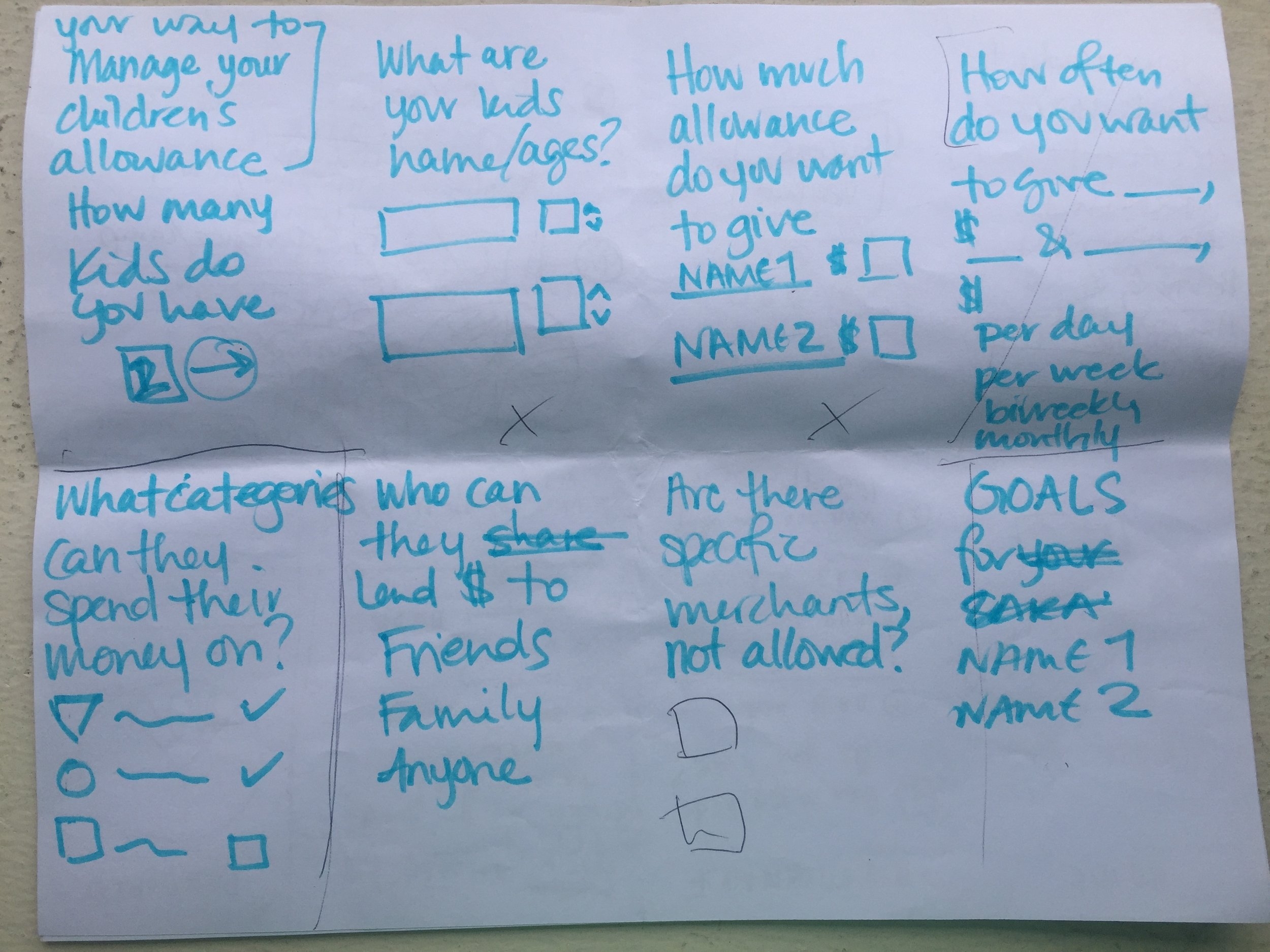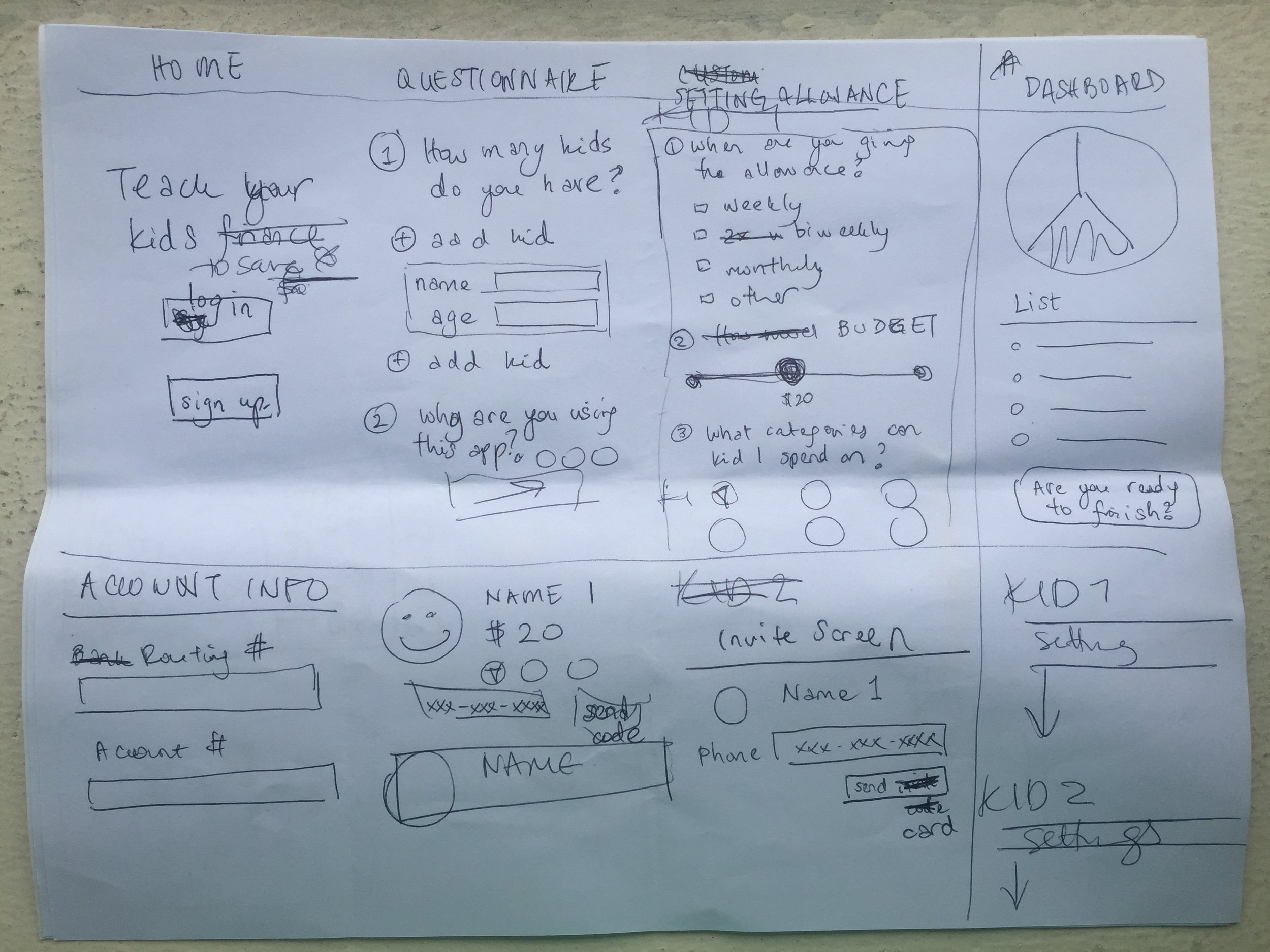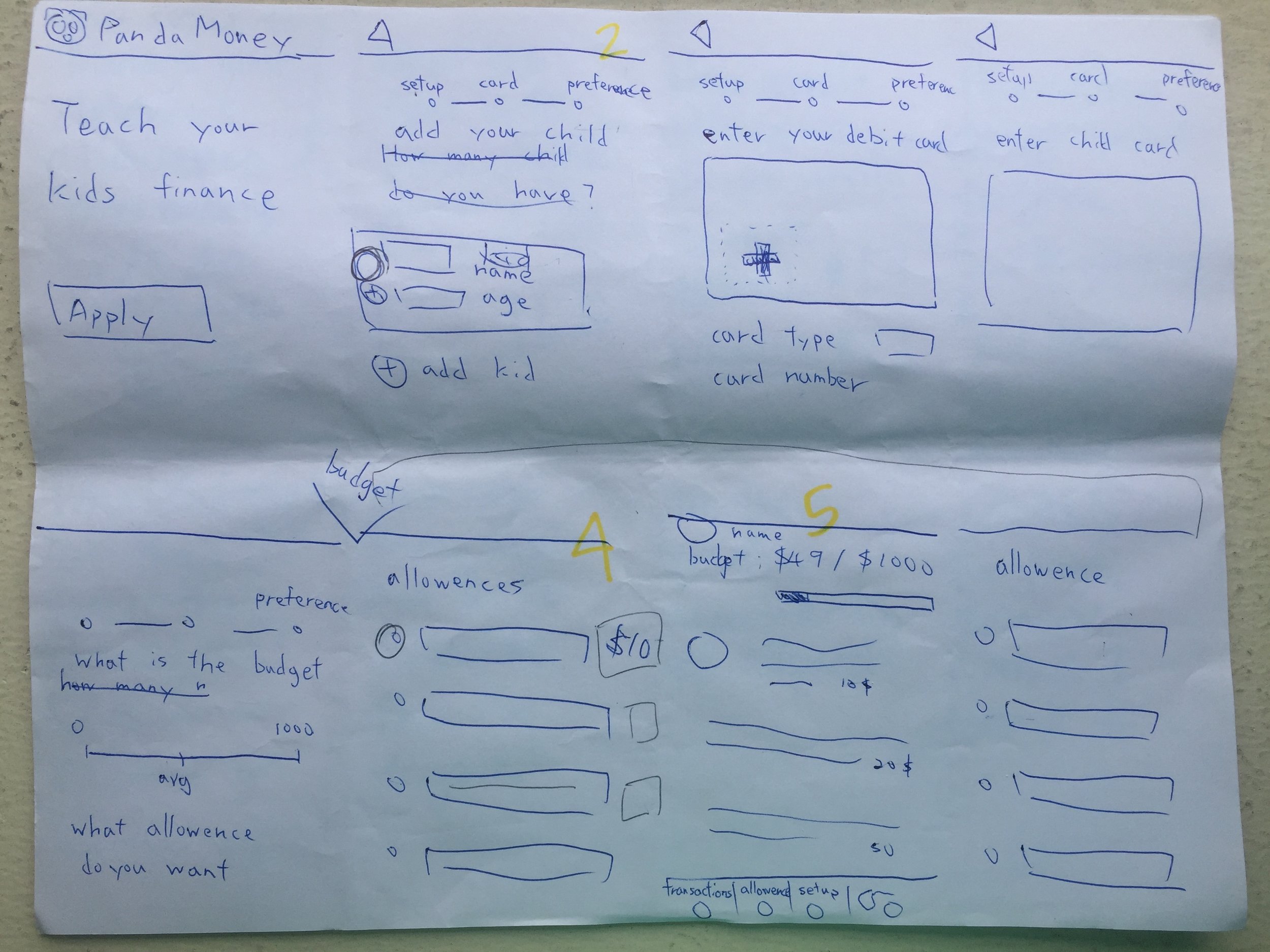WINNER | Beginex UX mini-Hackathon
RECOGNITION:
BEST OVERALL
BEST PRESENTATION
TEAM:
Jimmy Chao, programmer
Lauren Barnett, consultant
Melissa Ip, communications
MY ROLE:
facilitator, collaborator, presenter
METHODS:
rapid prototyping,
design thinking
TOOLS:
pencil & paper, Sketch
TEAM 7 with Best Overall PRIZE
KEY OBJECTIVES >>
Create an intuitive, trustworthy and efficient way for parents to create an account, add debit cards and send money to their kids and view transaction history
CLIENT >>
Panda Money is a mobile bank for kids that teaches children to be financially savvy.
SUMMARY >>
Panda Money, Inc. is a Russian company with a current user base of 12,000 in the EU. Panda Money is a current Starta Accelerator Cohort member with 3-months support to test the U.S. market for its P·M·F.
All attendees were pre-assigned a team and the event began wit 30-minutes of Q&A to ask the founder, Nikoloz Nikolaishvili, questions pertaining to his current business.
Teams were given two-hours to work on their UX-centric solution and to come up with for a working, clickable prototype that best executed Panda Money’s introduction to the US market. In the remaining 30-minutes, each of the 8-teams presented their solution in 2-minute presentations followed by founder feedback.
PROCESS >>
1. APPROACH
How do we do this? As first-time hackathon attendees we were a bit scraped for where to start. We established introductions quickly, clarifications of the ask, and started speaking through ideas. We explored Greenlight as a competitor, a recent article I had read in the WaPo about children’s online shopping habits and the parents oversight and dove into thinking through the problem. With limited exposure to prototyping software tools, we dug around to find pencil & paper
2. Drawing Ideas
Relying upon design thinking techniques, I asked each of us to draw out our idealized user flow. The images below show each team members design sketch on paper. We did this silently and then presented them to each other, one at a time. During these mini-shares, we noted +/- about each design and debated each steps flow. The final iteration of our design came with a mashup of these individual designs and then we refined-refined-refined in multiple quick iterations as dwindled.
3. Iteration Discussions
A few conversations stuck out as ‘ah-ha’ moments. First the conversation of trust. This came up when discussing Jimmy’s work and the card upload as frame 3. Quickly, it was agreed that we needed to build the trust of the user and move that step to later, but there was more of an issue of trust there. The nagging idea throughout the challenge was an imagery of a mommy blogger chore chart. Innate to me was the idea that parents use chores and allowance to teach their children about money, reward them for good behavior and discipline them by taking something away. This folk-hero suburban stay at home folklore (I’ve never seen one in real life) being replaced by a random mobile app needed to dig a little deeper.
Teams diligently work closing in on 2-hr deadline
4. Cross-Cultural Communication, FTW
You’ll notice in the drawing that 2 of the 3 have the greeting “Teach your kids finance” per the proposal. This wasn’t the financial models and abstractions of stocks and Wall Street, this wasn’t even about interest rates. No, Panda Money hits closer to the 8-year-old psyche of teaching responsibility through the American tradition of allowances. I took this word choice for granted. Jimmy, a first-generation immigrant, thought we needed to clarify the word choice. An allowance of ‘what’ when used as a noun versus verb in my classic American nomenclature. BINGO. With this clarification, we had our hook for entering the American market and framed each new screen as a user-story centered around helping parents to manage their kids’ allowance seamlessly and with real oversight that would grow up with them as they became teenagers. Refinements continued as we revisited the Sketch file, chatted, repeat until time was up.
“Wow. That was great. You did exactly what I asked for. Thank you. I have no feedback.”
RECEPTION >>
Teams presented in the order of our assigned teams, so we went second to last. Our prototype wasn’t the most beautiful — that award would go to Team 4, but we listened to the founders challenge ahead. How would he break into a new, foreign market where he is not like his audience? Where was the need for the user base?
The hard work for Panda Money isn’t over. With this framework, they’ll need to build upon this prototype and design, re-iterate and test and they have the support to do that. For me and the rest of Team 7, it demonstrated the genius in simplifying, talking through a problem, user empathy, and repeat.
I recently attended attended another event and ran into a member of Team 4. About our win, he said, “I was sort of jealous.” When recapping this event to others, focusing on American allowances seems obvious to them. Duh. But one has to assume that this was only become the answer was already provided to them in my telling of this story. Isn’t that the mark of an intuitive design? It’s so obvious that users immediately ‘get it’?
Final hackathon prototype for Team 7’s vision of Panda Money-US.







